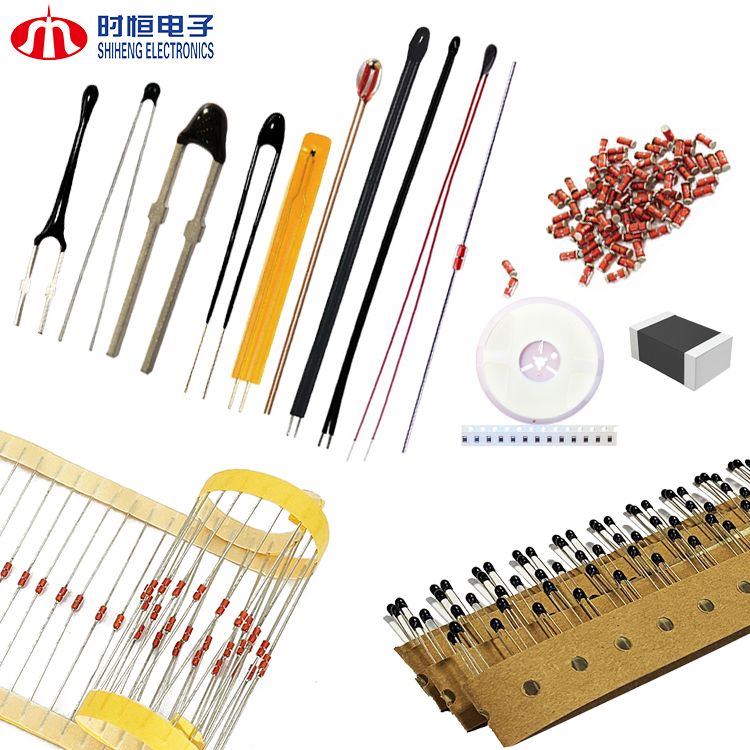QU'EST-CE QUE TU CHERCHES?
QU'EST-CE QUE TU CHERCHES?
Application des thermistances dans les outils électriques
Aug 15, 2024Les outils électriques sont de plus en plus utilisés dans l’industrie et les foyers modernes. Des perceuses aux scies électriques, en passant par les fraises, ces outils jouent un rôle important dans le travail quotidien. Cependant, les outils électriques génèrent beaucoup de chaleur en cas d’utilisation intensive, ce qui compromet leurs performances et leur durée de vie. Dans ce contexte, les thermistances sont devenues un composant indispensable dans la conception des outils électriques. Cet article explorera l'application des thermistances dans les outils électriques et leur rôle clé.

Les thermistances sont un type de composant dont la valeur de résistance change avec la température. Ils sont principalement divisés en deux types : NTC (coefficient de température négatif) et PTC (coefficient de température positif). Thermistances CTN diminuent leur valeur de résistance lorsque la température augmente, tandis que les thermistances PTC augmentent leur valeur de résistance lorsque la température augmente. Les thermistances NTC sont souvent utilisées dans les outils électriques pour surveiller et gérer la température afin de garantir le fonctionnement sûr des outils.

Les outils électriques peuvent surchauffer en raison de longues heures de travail ou de charges élevées pendant l'utilisation. Une surchauffe peut endommager le moteur de l'outil, composants électroniques, et peut même causer des problèmes de sécurité. Les thermistances surveillent la température des outils électriques en temps réel. Lorsque la température dépasse la plage de sécurité, la thermistance déclenche un mécanisme de protection pour réduire automatiquement la fréquence de fonctionnement du moteur ou couper l'alimentation électrique pour empêcher l'outil de surchauffer davantage.
Le composant principal des outils électriques est le moteur, et ses performances affectent directement l’efficacité et la durabilité de l’outil. Les thermistances sont généralement installées à l'intérieur ou à proximité du moteur pour surveiller la température du moteur en temps réel. Lorsque la température du moteur approche de la valeur critique, la thermistance envoie un signal et le système peut ajuster l'état de fonctionnement de l'outil en conséquence, par exemple en réduisant la vitesse ou en suspendant le travail pour garantir que le moteur ne soit pas endommagé par une surchauffe.
De nombreux outils électriques modernes utilisent des piles rechargeables comme source d’énergie. Les batteries génèrent également de la chaleur pendant la charge ou la décharge, en particulier lorsqu'elles sont utilisées sous une charge élevée. Les thermistances peuvent surveiller la température De la batterie et empêche la batterie de surchauffer, prolongeant ainsi la durée de vie de la batterie et améliorant la sécurité de l'outil. Par exemple, lorsque la température de la batterie est trop élevée, la thermistance peut déclencher le circuit de commande du chargeur ou de l'outil pour suspendre la charge ou réduire le taux de décharge afin d'éviter des risques potentiels pour la sécurité.
En plus de la surveillance de la température en temps réel, les thermistances peuvent également être utilisées pour détecter et prévenir les pannes d'outils. En surveillant en permanence les changements de température de l'outil, les thermistances peuvent détecter des signes potentiels de défaillance, tels qu'une surcharge du moteur ou une mauvaise dissipation thermique, et émettre des avertissements ou lancer des mesures de protection à l'avance. Cette fonction préventive permet de réduire le taux de panne et les coûts de réparation de l'outil.
Dans les applications pratiques, les thermistances sont largement utilisées dans divers types d'outils électriques. Par exemple, dans les perceuses électriques, les thermistances peuvent empêcher le moteur de surchauffer en raison d'un perçage continu ; dans les machines de découpe, ils peuvent garantir que la batterie et le moteur maintiennent une température sûre pendant les longs processus de découpe ; dans les scies électriques, les thermistances peuvent surveiller la température autour de la lame pour éviter d'endommager l'outil ou d'erreurs de coupe causées par une surchauffe.
L'application de thermistances dans les outils électriques offre des garanties importantes pour la sécurité, la durabilité et les performances des outils. Grâce à une surveillance et un contrôle précis de la température, les thermistances aident à prévenir la surchauffe, à protéger les moteurs et les batteries et à réduire le risque de panne. À mesure que la technologie des outils électriques continue de se développer, l'application de thermistances favorisera davantage l'intelligence et la fiabilité de la conception des outils et offrira aux utilisateurs une meilleure expérience utilisateur.
MOTS CLÉS :